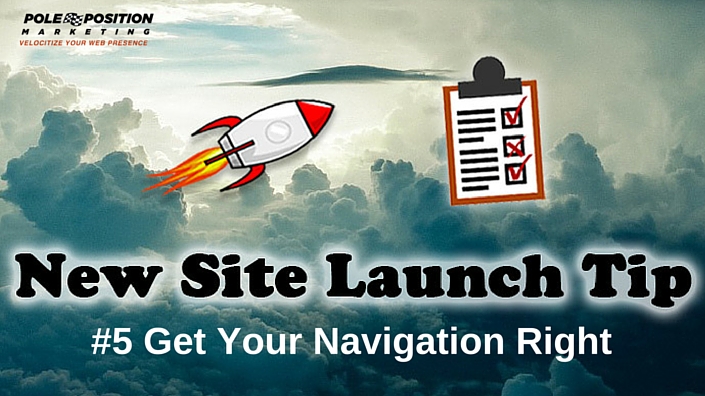When it’s time to upgrade your website for a new design, don’t let a good opportunity go to waste. This is a perfect time to revisit your site navigation.
While the bulk of your content might not change, you may find that the way your visitors want to access that content has changed. This is your opportunity to make sure that the navigation for the new site is better than the last.
Here are a few things keep in mind:
Website Navigation Should be Organized
Make sure your product/service categories are the main focus. These are often buried under a link for “our services” or “products,” while other options such as “about us” and “contact” all share equal prominence.
I fully understand that these latter options are important, but they are secondary to your primary offerings. As soon as a visitor lands on your site–regardless of which page–a single glance should tell them what you do.
Website Navigation Should use Common Language
Industry buzzwords that only industry insiders understand often find their way into the navigation of many sites. Don’t make the mistake in thinking that only those familiar with the type of work you do will be on your site. Visitors who know very little about your industry are coming to you and they, too, need to find their way around your site.
Take a few minutes to perform some new keyword research. This might shed some light on terminology more in line to what the majority of your visitors are looking for. Your site navigation should ultimately reflect the word uses of that majority.
Website Navigation Should Facilitate Action
It’s common now for navigation menus to have a lot of options. Too many, in fact. Visitors want to easily be able to find what they are looking for, but overly-bloated navigation menus are not the answer.
Turns out that people want a few options to choose from and then maybe a few more that will help them dig deep. When you present too many options, it’s simply overwhelming for them.
Keep your navigation simple and focused. Only show the top-level categories, and let visitors drill down from there after they make their selection.
Website Navigation Should be Good for Search Engines
[inlinetweet prefix=”” tweeter=”” suffix=””]As much as navigation should be built for the user, we can’t forget about the search engines.[/inlinetweet] That means you have to pay attention to how your navigation is coded. Sometimes developers use link code that is incompatible with search engine crawling. And while search engines have gotten better about this, it’s still better to make it all as easy as possible.
But aside from being able to follow the links, the search engines also look at organization which brings us back to the first point above. But for the programmer, this means using URLs that include category and sub-category names. The search engines learn a lot from the URLs, if the information is there for them to learn from. Neglecting that means you’re neglecting a search signal that can be used in your favor.
I don’t think there has ever been a time that, when re-designing a website, that I have not made modifications to the navigation. Using the points above, we have always found ways to improve both the visitor and search experience.
No website is perfect, even a brand new one. But don’t make the mistake of rolling out a new site with an outdated navigation. A new site deserves a fresh approach, not just visually, but navigationally as well.

